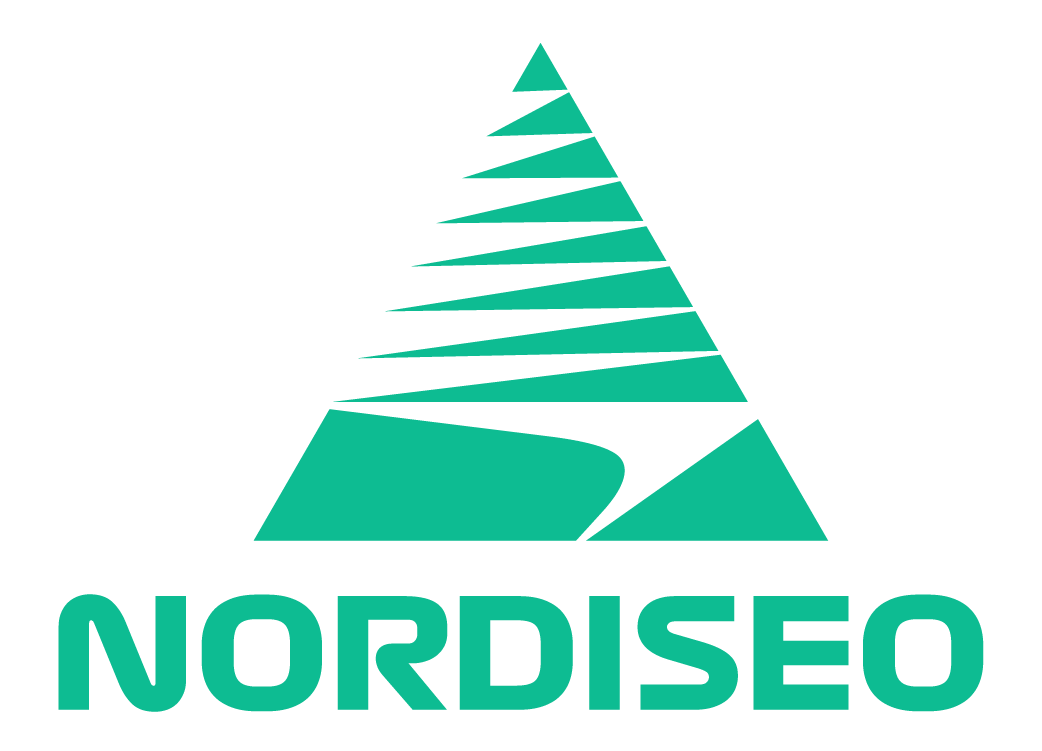Backlinks are the cornerstone of any robust Search Engine Optimization (SEO) strategy, forming the invisible threads that connect the vast worldwide web.
A backlink, simply put, is a link from one website to another. More than a pathway for web navigation, these links act as endorsements, with search engines considering them votes of confidence that amplify a website’s authority and credibility.
A strong backlink profile is a part of a strong Off-Page SEO Strategy that can be profoundly impactful for a website’s visibility and rankings in search engine results, making the art of acquiring high-quality backlinks a top priority for websites keen on optimizing their online presence.
Here are some quick answers and tips that we cover in greater depth throughout the article:
| Question | Answer |
|---|---|
| What are backlinks in SEO? | Backlinks are links from one website to another, serving as endorsements and influencing search engine rankings. |
| Why does backlinks matter? | Search algorithms have historically used backlinks as a key ranking factor, signaling content quality and relevance. |
| How do I acquire Backlinks? | Focus on content marketing and networking for sustainable link acquisition in 2024. |
| 5 best strategies to get quality backlinks for your site | 1. Create linkable assets 2. Utilize social media 3. Engage in partnerships 4. Use the Skyscraper Technique 5. Implement Guestographics |
What are backlinks?
A backlink is a hyperlink from one web page to another. When a webpage links to any other page, it’s known as a backlink. In the earlier days of the web, backlinks were the primary means of web navigation; today, their main function lies in web indexing and increasing online visibility.
Akin to citations in academic papers, backlinks serve as indicators for search engines that others vouch for the content on a site. The more backlinks a site has from reputable sources, the more credible it appears to search engines, particularly Google. This credibility can affect a site’s ranking position and visibility in search engine results pages (SERPs).

Think of each backlink as a positive vote for your website’s quality. However, not all votes are weighted equally. A backlink from a trustworthy, authoritative website will have a more significant impact than one from a lesser-known site.
Rasmus Isak Kernen – Nordiseo
Backlinks: They should still be the foundation of your SEO strategy
As the digital world evolves, so does the significance of backlinks and off-page seo. Search engines like Google continuously refine their algorithms, and while the relevance of backlinks remains constant, how they are evaluated is always in flux.
Some SEOs and digital marketers want to give the impression that backlinks are losing some or all of their value. At Nordiseo, we would argue that this is not the case.
It might be a goal for big search engines to not rely as heavily on backlinks as they currently do, but in today’s search results, we see no indication that backlinks aren’t the biggest factor for rankings.
Rasmus Isak Kernen – Nordiseo
A strategically built backlink profile can leverage this ongoing evolution, using high-quality links to propel your website’s visibility. To establish such a profile, consider the following steps:
- Begin by creating content that others in your field will want to link to. Content is king when it comes to natural link acquisition.
- Engage with your industry community through forums, social media, and blogs. This doesn’t just generate direct backlinks but also opens doors to future linking opportunities.
- Conduct thorough backlink audits to understand your profile’s current strengths and weaknesses. Tools like Majestic, Ahrefs, or Moz can provide valuable insights.
Incorporating backlinks into your SEO strategy can feel like a daunting task, but with a smart, methodical approach, it can yield significant results.
The historical significance of backlinks in search engine algorithms
The advent of the internet brought with it the necessity for organizing a flood of digital information. Search engines emerged as the librarians of this chaotic, burgeoning virtual library. Early search engines relied heavily on content and metadata to categorize and rank web pages.
However, it was the introduction of backlinks as a ranking factor that revolutionized the search engine optimization landscape. It helped pivot attention from mere on-page content to the interconnected nature of information across the web.
Google’s PageRank algorithm, developed by co-founders Larry Page and Sergey Brin during their time at Stanford University, was a breakthrough in this arena.
Introduced in the late 1990s, PageRank was designed to measure a website’s importance based on the quantity and quality of backlinks pointing to it. This approach emulated academic citation analysis, where the influence of a research paper is gauged by how many times it is referenced by other papers.
Search engines today use complex algorithms that consider a multitude of factors, including but not limited to backlinks, to determine a page’s ranking.
The different types of backlinks
Different backlinks serve different purposes and varying impacts on your site’s SEO health.
Essentially, we can categorize backlinks based on how they are tagged by the source website, which influences how search engines interpret these links:
- Dofollow Backlinks – The standard type of backlink that search engines consider when assessing your site’s link equity. Unless a link is specifically tagged as “nofollow”, it is automatically treated as a dofollow which passes along “link juice”.
- Nofollow Backlinks – These links include a ‘rel=”nofollow”‘ tag, instructing search engines not to pass on authority or link juice. They are often used to link to unverified content or in paid/advertising contexts where the link shouldn’t influence the receiving site’s ranking.
Not only are backlinks varied by their follow status, but they also differ in the way they are acquired:
Backlinks can come naturally when content creators link to your website because they value your content and believe it contributes to their work. Alternatively, they can be the result of strategic actions, such as networking or deliberate content promotion.
Another aspect to consider is how these backlinks are perceived ethically within the SEO community:
- Editorial Links – These are the gold standard in backlinks. Earned from creating high-quality, valuable content that others want to cite.
- Guest Blogging Links – Obtained by writing content for another website in your industry, which includes backlinks to your own site.
- Badge Links – Created when you design a badge to award to other sites as a status symbol, which links back to your site.
- Forum & Comment Links – Often perceived as lower quality, these links are generated in forum threads or blog comments and may contain ‘nofollow’ tags by default.
Each type of backlink carries unique advantages and can be integrated into a comprehensive SEO strategy tailored to a website’s specific needs.
Dofollow vs. Nofollow
Dofollow backlinks are the most common and desired type of backlink for SEO. By default, when a website links to another, the link is dofollow. These backlinks are valuable because they effectively ‘vouch’ for the quality of the linked website, passing on what is often called “link juice” to help improve the site’s standing in search engine results pages (SERPs).
In contrast, nofollow backlinks include an HTML attribute that tells search engines to ignore the link in terms of passing on authority or link equity. The rel="nofollow" attribute was initially introduced to combat spammy link-building practices by providing a way to link to content without endorsing it in the eyes of search engines.
Despite nofollow links not contributing directly to SERP rank improvements, they still hold value. They can drive traffic, lead to dofollow links indirectly, and contribute to brand exposure and credibility in a natural link profile.
| Type | Description | SEO Impact |
|---|---|---|
| Dofollow | Default link without nofollow attribute | Passes link equity and boosts SERP ranking |
| Nofollow | Link with rel="nofollow" attribute | Does not pass link equity, but can still be beneficial for traffic and brand value |
When implementing backlink strategies, a mix of dofollow and nofollow links is crucial for maintaining a natural-looking link profile, which search engines favor.
White-Hat vs. Black-Hat Backlink Techniques
In the realm of SEO, backlink building can take two distinct paths: white-hat and black-hat techniques. The approach one chooses can significantly influence a site’s long-term search engine ranking success and overall online reputation.

What most consider to be white-hat backlink techniques are those that align with search engine guidelines and are designed to build a sustainable online presence. These techniques focus on creating valuable content that naturally attracts backlinks and engages in ethical promotional practices.
- Producing high-quality, informative, and original content that encourages organic sharing and linking.
- Engaging with your audience through social media, forums, and relevant online communities to increase visibility.
- Developing genuine relationships with other industry professionals and leveraging these connections for guest blogging opportunities.

The most common definition of black-hat backlink techniques involves attempts to game search engine algorithms and often violates guidelines. These dubious tactics can result in severe penalties, including removal from search engine indexes.
| Tactic | Risks | Outcome |
|---|---|---|
| Purchasing backlinks | Penalties or de-indexing | Artificially inflates page rank |
| Using hidden links or text | Deceptive practice flagged by algorithms | Irrelevant visibility that could damage reputation |
| Participating in link schemes or farms | Potential for rapid decline in SERP ranking with a penalty | Short-term gains that could lead to long-term losses |
It’s important to realize that while black-hat techniques might deliver quick results, the risks associated with these tactics can have damaging and long-lasting effects on a website’s standing in search engines.
Achieving a top-ranking position naturally may take longer, but the sustainable results and avoidance of punitive actions are well worth the investment of time and resources.
Crafting a strong backlink profile
A diverse and robust backlink profile for great off-page seo does not only help in improving your website’s SERP ranking but also fortifies its standing against algorithm updates and changes in SEO trends. To ensure that your backlink strategy is sound and effective, consider the following guidelines:
First, aim to acquire relevant backlinks from sites that are esteemed in your niche. Contextual relevance between the linking pages signals search engines about the authenticity and pertinence of the link.
Secondly, the number of unique domains linking to your site matters; it’s better to have ten backlinks from ten different high-trust domains than multiple links from a single domain.
Moreover, the anchor text – the clickable text in the hyperlink – should be varied and keyword-rich, yet natural, avoiding over-optimization which can be red-flagged by search engines.
Finally, remember that link velocity, the rate at which your site acquires backlinks, should be consistent and appear organic to avoid penalties for unnatural growth.
Keep in mind that building a strong backlink profile is a marathon, not a sprint. It takes time and dedication to cultivate relationships and create content that truly warrants being linked to.
To evaluate your backlink profile:
- Analyze the number of backlinks and referring domains with SEO tools such as Ahrefs, SEMrush, SE Ranking, or Moz.
- Look for backlinks from high-authority websites, they carry more weight in SEO value.
- Check for a diverse range of anchor texts and ensure they are relevant to the linked pages.
- Ensure a growth in backlinks from relevant and quality content over time, indicating a healthy and natural backlink profile.
Lastly, ongoing monitoring and refinement of your backlink profile are imperative. Remove or disavow harmful links that could be detrimental to your site’s SEO.
How to evaluate your current backlink profile
Evaluating your current backlink profile is a crucial exercise in ensuring the effectiveness of your SEO strategy. It allows you to understand the strengths and weaknesses of your existing links, measure their impact on search engine performance, and identify opportunities for improvement.
When beginning this evaluation, there are key factors to consider to gain a comprehensive understanding of your backlink landscape:
| Factor | Importance | Tools for Analysis |
|---|---|---|
| Quantity of Backlinks | Gives a baseline understanding of backlink volume. | Ahrefs, SEMrush, Moz |
| Quality of Backlinks | High-quality links from authoritative sites are more beneficial. | Majestic, Moz’s Link Explorer |
| Link Diversity | Referring domains should be varied and relevant to your niche. | Google Search Console, LinkResearchTools |
| Anchor Text Analysis | Analyzes the clickable text used in links to determine relevance and diversity. | Ahrefs, CognitiveSEO |
| Linking Domain Health | Backlinks from spammy or irrelevant domains can harm your profile. | Majestic, SEMrush |
Start by auditing the total number of backlinks and unique referring domains using tools like Ahrefs or Moz. This will give you an initial scope of your website’s backlink quantity.
Next, analyze the quality of these backlinks, looking for those that come from high-authority websites in your industry. Sorting for DR (Domain Rating) in tools such as Ahrefs or Majestic can help in assessing the trustworthiness and citation strength of your backlinks.
Assessing the anchor text associated with your backlinks can provide valuable insights into how your site may be perceived by search engines in terms of relevance to specific keywords or topics. Tools like CognitiveSEO are helpful for this analysis.
Identifying and disavowing toxic links
Recognizing and eliminating toxic backlinks is a maintenance task that could do good for any website’s SEO health. A toxic backlink is one that comes from a low-quality or suspicious website, which can result in penalties from search engines and negatively impact your SEO rankings.
To start, you need to conduct a backlink audit using tools like Ahrefs, SEMrush, or Moz. These tools can help identify links from spammy or irrelevant domains. Once you’ve compiled a list of questionable backlinks, you need to analyze them to confirm their toxicity. Look for signs like overly optimized anchor text, links from unrelated content, or an unusually rapid accumulation of backlinks.
If you come across harmful links, you have the option to reach out to the webmaster of the domain and kindly request the removal of the link. However, if this isn’t successful or feasible, the next step is to use Google’s Disavow Tool.
The Disavow Tool allows you to ask Google not to take certain links into account when assessing your site. Create a file containing the domains or URLs of the toxic backlinks and submit it through the Google Disavow Tool. It’s important to use this tool cautiously; if used incorrectly, you might disavow healthy links and harm your SEO performance.
Strategies to Acquire Backlinks in 2024
In the ever-evolving landscape of SEO, strategies to acquire backlinks in 2024 are increasingly sophisticated, leaning heavily on innovative content creation and leveraging mutually beneficial relationships.
As search engines enhance their algorithms, the emphasis on link quality continues to intensify. Understanding the nuances of organic link building and staying ahead of trends is paramount for any business looking to improve their online authority and search engine rankings.
This year, successful link acquisition hinges on a clear understanding of your target audience, the production of stellar content, and active engagement within your industry’s digital sphere. Here’s a succinct exploration of modern strategies that have potential to yield valuable backlinks:
| Strategy | Description | Benefits |
|---|---|---|
| Targeted Content Creation | Developing top-tier content tailored to the interests of your intended demographic. | Attracts backlinks naturally, enhances relevance and engagement. |
| Influencer Collaborations | Partnering with industry influencers to reach a broader audience. | Expands reach and brings in backlinks from new and diverse domains. |
| Data-Driven Resource Development | Creating valuable resources such as reports, case studies, and original research. | Establishes authority and encourages organic linking from reputable sources. |
| Interactive Content | Designing engaging materials such as quizzes, infographics, and interactive tools. | Boosts engagement and shareability, leading to increased link potential. |
“Focus on building relationships, not just links. Networking within your industry can lead to opportunities for guest posts, joint webinars, and other collaborative projects that can result in valuable backlinks.”
Rasmus Isak Kernen – Nordiseo
Furthermore, enhancing existing content and repurposing it into different formats can reinvigorate interest and attract new links. For instance, turning a popular blog post into a video tutorial or an infographic can tap into different segments of your audience and encourage shares across various platforms.
It’s also crucial to actively pursue guest blogging opportunities with reputable sites. This not only provides a platform for sharing expertise but also opens the door to a new set of potential links from domains with significant authority.
Keep a keen eye on emerging trends and technologies in your field, and be the first to publish comprehensive guides or opinions. Being a forerunner in information dissemination can cement your position as a thought leader, prompting others to reference and link to your content.
Leveraging Content Marketing for Link Acquisition
The process of acquiring backlinks from content marketing begins with understanding your audience’s needs and crafting content that resonates deeply, providing value that motivates others to share and link back to your resources.
Creating a variety of content types such as: how-to guides, thought leadership articles, industry studies, infographics, videos that caters to different preferences and expanding your reach.
By answering common questions or shedding light on pressing issues within your field, your content becomes a natural magnet for backlinks, as others reference your work to enhance their own content’s authenticity and depth.
Content marketing for link acquisition transcends mere content generation; it demands strategic promotion and targeted outreach. Try to really deliver value to your audience, do not be shy to give out secrets to get the discussion started and your reach going. Then share your content across social media channels, forums, and industry networks to maximize visibility and encourage backlinks.
Rasmus Isak Kernen – Nordiseo
- Understand Your Audience: Dive deep into the interests and pain points of your target demographic to craft content that answers their pressing questions.
- Create Shareable Content: Develop engaging and informative content that provides value, driving readers to share and link to it. Do not be shy to share some of your secret tips to really get discussion going.
- Diversify Content Formats: Use a mix of mediums like blog posts, infographics, and videos to cater to different preferences and to increase shareability.
- Promote Strategically: Share your content on platforms where your audience gathers and utilize email marketing to reach prospects directly.
- Engage in Outreach: Build relationships with influencers and industry peers to earn mentions and backlinks organically.
Fostering relationships with other content creators, influencers, and industry leaders can also result in backlinks, whether through guest posting on their platforms or from their mentions of your content in their pieces.
Network building through guest blogging and collaborations
Building a robust professional network is pivotal in the digital realm, and guest blogging and collaborations stand as potent instruments for securing valuable backlinks and expanding your audience.
Guest blogging allows you to contribute content to other websites in your industry and typically includes a backlink to your own website. It serves the dual purpose of showcasing your expertise to a new audience and boosting your SEO efforts through external links from high-authority domains.

Network building is not a one-off campaign; it’s a strategic long-term endeavor. Begin by identifying key influencers and authoritative websites within your niche. Develop a genuine rapport with site owners and influencers through thoughtful interaction on their published content and social media postings. Once a relationship is established, propose a guest blogging exchange a win-win scenario that provides fresh content for them and exposure for you.
A great place for networking is LinkedIN, a place where many professionals share their experiences and are very open to being contacted. In contrary to a platform like Instagram or Facebook.
Collaborations can also take form in joint webinars, co-authored reports, or co-branded campaigns. These ventures not only bolster your reputation and credibility but also encourage participants to share the final product, naturally generating backlinks.
| Collaboration Type | Advantages | Key Consideration |
|---|---|---|
| Guest Blogging | Direct exposure to a broader audience and acquisition of high-quality backlinks. | Choose reputable, relevant sites and provide value-driven content. |
| Joint Webinars | Cross-promotion opportunities and engagement with participants’ networks. | Align with industry experts who share a similar target audience. |
| Co-Authored Reports | Combines expertise and establishes both parties as thought leaders. | Create content that fills a knowledge gap and offers actionable insights. |
Keep in mind that the quality of the collaborations and guest blogging opportunities should align with the standard of content you aspire to publish on your own site.
Moreover, the backlinks that you accrue through these networking strategies should fit seamlessly within the content to add value for readers, rather than appear as forced or out of context. This is key in the perception of both the audience and search engines.
5 Best Strategies to Get Quality Backlinks for Your Site
Here we outline the 5 best strategies to help you get high-caliber backlinks that can make a significant difference in your online visibility.
- Creating Linkable Assets: Develop comprehensive resources such as original research, ultimate guides, or tools that provide high value to your audience. These assets naturally encourage other websites to link back to your content as a reference.
- Utilizing Social Media Platforms: Promote your content on social media to increase its visibility. Engaging content is more likely to be shared, broadening your reach and capturing the attention of site owners who might link to your resources.
- Business Partnerships and Sponsorships: Leverage your professional relationships by initiating partnerships or sponsorships that include backlinking opportunities from their websites to yours.
- Skyscraper Technique: Identify well-performing content in your niche, create something better, and then reach out to those linking to the original piece to share your enhanced version. The goal is to earn those backlinks by providing superior content.
- Guestographics: Combine guest posting with infographics. Create a visually appealing infographic and offer it to relevants sites with a short introduction or a full article, asking for a credit link back to your website.
1. Creating linkable assets
Central to any successful link-building campaign is the creation of linkable assets. These are high-value pieces of content that are so informative, entertaining, or useful that other site owners naturally want to link to them. Developing linkable assets is integral because it attracts organic, high-quality backlinks, which are pivotal for improving search engine rankings and establishing domain authority.
A linkable asset is not merely a piece of content. It is a resource entrenched with such value that it compels others in the industry to reference and share it.
When creating linkable assets, consider the following elements:
- Uniqueness: Offer a fresh perspective or new information that can’t be found elsewhere.
- Authority: If possible, display expertise and thorough knowledge on the subject matter. Authoritative resources are more likely to be trusted and cited by others.
- Practicality: Develop tools, guides, or resources that solve common problems or make tasks easier for users.
- Visual Appeal: Design assets that are visually attractive and easy to interpret. Infographics and videos are often shared due to their engaging nature.
These linkable assets can take many forms, such as:
- An ultimate guide that exhaustively covers a topic.
- An original study or research report providing new insights into industry trends.
- An interactive tool that simplifies a complex process for users.
- Infographics that condense data into easily digestible visuals.
2. Utilizing social media platforms
Social media channels offer a vast landscape where content can rapidly spread, reach diverse audiences, and create opportunities for engagement that can translate into backlinks.
When utilizing social media for link-building, it’s crucial to identify which platforms align best with your brand and where your target audience is most active.
A well-crafted social media post can provoke interest and prompt shares, but most importantly, it can direct traffic back to your site, leading to potential backlinks from those who find value in your content and wish to reference it in their work.
By fostering an active presence and consistently sharing high-value content, businesses can turn their social media profiles into vital cogs of their SEO machine.
Consider these steps for leveraging social media platforms to facilitate backlink acquisition:
- Create Shareworthy Content: Content that triggers emotion, solves problems, or is highly informative is more likely to be shared.
- Engage with Your Community: Respond to comments, participate in discussions, and be an active member of your community to build rapport and encourage shares and backlinks.
- Use Visuals: Posts with images, videos, or infographics see higher engagement rates than text-only content, increasing the likelihood of gaining backlinks.
- Cross-promote Content: Don’t limit your content to one platform; cross-promote it across different channels to maximize reach.
- Incorporate Hashtags: Use relevant hashtags to increase the discoverability of your posts to wider audiences, including influencers and content creators who may backlink to your site.
- Do not be afraid to give out some secrets: Try and really give advice that you value highly and might consider “secret”, we believe it can get the discussion going and you get much more back from it then you lose.
While it’s not common for social media shares to count as direct backlinks, the indirect benefits are clear and manifold. Social shares amplify your reach, putting your content in front of content creators who can link back to your site from their own platforms. Additionally, leveraging social signals can enhance the perceived popularity and relevance of your content, which are factors search engines may consider when ranking your site
3. Business partnerships and sponsorships
Forging business partnerships and securing sponsorships are effective strategies for acquiring quality backlinks that can significantly boost your website’s search engine optimization (SEO).
When seeking out potential partners for backlink opportunities, look towards industry associations, professional groups, or businesses that complement your services. Engage in sponsorships of events, webinars, or conferences that are relevant to your sector.

Always have an HTML snippet ready, with a backlink to your site and a great design showing off your site as a partner. It could look something like this:

Our partner for visibility online | Nordiseo
Remember that the most valuable backlinks are those that come from respected and relevant sources within your industry, thereby reinforcing your website’s authority and credibility in the eyes of search engines and potential clients.
Rasmus Isak Kernen – Nordiseo
Take these steps to ensure your business partnerships and sponsorships are successful in generating backlinks:
- Carefully Select Partners: Choose to ally with organizations that have a strong online presence and share your target audience.
- Define the Terms: Be clear about the expectations and ensure that the agreement includes a mention of your website on their digital platforms.
- Provide Value: Your partnerships or sponsorships should present a tangible benefit to both parties, ensuring a lasting and fruitful relationship.
- Keep it Relevant: Sponsor events or initiatives that align with your business activities to maintain consistency for your brand and relevance in your backlink profile.
- Promote the Relationship: Utilize your digital channels to share news about the partnership or sponsorship, boosting visibility for both parties involved.
By cultivating relationships based on shared interests and complementary strengths, you are more likely to establish enduring partnerships that serve your SEO goals.
It’s also a great idea to maintain these relationships even after the initial link exchange, as continual collaboration can lead to further backlink opportunities and stronger networks over time.
4. Skyscraper Technique
The Skyscraper Technique is an effective SEO approach that involves improving upon existing popular content and then reaching out to the corresponding websites to replace their outbound links with links to your more comprehensive resource.
This technique leverages the hard work already done by others and then adds further value, aiming to surpass the quality of the original piece. The goal is clear: compel those who linked to the original content to now link to your superior version instead, thus enhancing your own content’s backlink profile.
To effectively employ the Skyscraper Technique, one must first identify content within their niche that has already attracted a considerable number of backlinks.
By using tools to analyze such content, you can then create something that not only matches it in quality but exceeds it in depth, breadth, and current relevance.
Here are key steps involved in the Skyscraper Technique:
- Research: Find content that is well-linked and highly ranked in your niche.
- Develop: Create content that provides more value in terms of freshness, depth, or insight.
- Outreach: Contact the original backlink creators, inform them of your superior resource, and suggest it as a more valuable link for their audience.
It’s worth noting that success with the Skyscraper Technique is not just about creating something “bigger” but also better. Whether it’s through a more modern take on the topic, additional resources, or a more user-friendly presentation, the idea is to attract attention and earn those valuable links.
| Aspect | Description | Impact |
|---|---|---|
| Quality | Superior comprehensive resource | Attracts high-quality backlinks |
| Value | More in-depth, unique, updated information | Increases relevance and link-worthiness |
| Presentation | User-friendly format and visual appeal | Enhances readability and engagement |
5. Guestographics
Combining the art of guest posting with the engaging power of infographics, the strategy of Guestographics presents a compelling way to earn quality backlinks and enhance the SEO of your website.
This approach revolves around creating informative, visually appealing infographics and offering them to other blogs or websites in your niche with a request for a link back to your site. This approach could increase your hit rate for acquiring backlinks as it is a strategy not used by many, and therefore sets you apart from many guest posts offers.
The effectiveness of Guestographics lies in their ability to simplify complex information into an easily digestible format that readers are more prone to share.
When you provide high-quality infographics to others in your industry, you’re delivering valuable content that they can feature in their own posts, often with a backlink to your site to credit your work.
| Steps for Effective Guestographics | Action Items |
|---|---|
| Content Creation | Design an infographic that is relevant, informative, and visually attractive. |
| Target Identification | Identify blogs or websites that align with your content’s topic and audience. |
| Outreach | Reach out to the targets with personalized communication, offering the infographic. |
| Provision of a Contextual Introduction | Additionally, offer a short, unique introduction to accompany the infographic that includes your desired backlink. |
To maximize the impact of your Guestographics, it’s important to personalize your outreach emails, complementing the recipient’s existing content and demonstrating how your infographic adds value for their audience.
It’s also a good practice to provide a unique, contextually relevant introduction or a full-fledged article that can be posted along with the infographic, seamlessly incorporating the backlink to your site.
“The dual advantage of Guestographics is clear – not only do they appeal to the visual learner, but they also offer the SEO boost of traditional guest posts in a creative and unique way.”
Advanced link building: Next-level techniques
Next-level techniques for acquiring backlinks require innovation, a thorough understanding of the changing digital landscape, and the know-how to leverage emerging trends and tools. Here we delve into two key strategies that represent the cutting edge of link-building efficacy.
| Technique | Benefits |
|---|---|
| Reverse Engineering Competitor Backlinks | Gains insight into already proven effective strategies and identifies new link opportunities. |
| PR and Media Outreach | Acquires high-quality, authoritative backlinks and enhances brand visibility. |
Exploring the Efficiency of Reverse Engineering Competitor Backlinks:
A powerful approach in advanced link building is to analyze the backlink profiles of top-performing competitors in your niche. By understanding where their links are coming from, you can identify opportunities to target the same or similar sources. Tools like Ahrefs or SEMrush provide insights into your competitors’ strategies, revealing the link-building tactics that have earned them a ranking edge. This competitive intelligence allows you to craft link acquisition strategies that can match or surpass their performance.
The process of reverse engineering requires several key steps:
- Identify Competitors: Pinpoint who is ranking well in your industry or niche.
- Analyze Backlink Profiles: Use SEO tools like Ahrefs or SEMrush to delve into the specifics of their backlinks.
- Dissect Strategies: Determine the tactics competitors are using—quality of content, guest posts, partnerships—and whether you can apply similar methods with your unique flair.
“Reverse engineering is not about imitation but inspiration; it guides you to understand the market’s existing preferences, helping you to refine your outreach strategy.”
Rasmus Isak Kernen – Nordiseo
Reverse engineering goes beyond mere replication of competitors’ backlinking efforts. It offers a strategic roadmap to:
- Acquire a deep understanding of the competitive backlinking landscape.
- Spot trends and patterns in link-building that are rewarded by search engines.
- Uncover gaps or opportunities they’ve missed, allowing you to capitalize on them.
The Role of PR in Securing Media Mentions and Links:
Public Relations (PR) remains an essential facet for securing authoritative links, especially in the form of media mentions. Crafting newsworthy stories and pitching them to reporters and industry influencers can lead to features in prominent publications. These mentions often come with high-quality backlinks that boost SEO and brand visibility. A strong narrative, a unique angle, or a compelling piece of data can be the catalyst for significant media pickup and the ensuing inbound link profile enrichment. This takes time, but when you get it right, the links are amazing.
In leveraging PR for link building, the emphasis is on creating a narrative that resonates not just with potential backlink sources, but also with the target audience. This requires a careful fusion of newsworthiness and relevance to the publication’s readership. A successful PR pitch often contains:
- An engaging hook that captures immediate attention.
- A unique angle or perspective not currently covered by other media outlets.
- Timeliness that aligns with current trends or events.
- Valuable, actionable information that provides genuine insight or utility to the audience.
Measuring the impact of backlinks on your SEO performance
Measuring the impact of backlinks on SEO performance is crucial for understanding the effectiveness of your link-building efforts. It involves monitoring various metrics that indicate the strength and value of your backlink profile. To gauge the influence of backlinks, it’s essential to consider several key performance indicators (KPIs).
A comprehensive backlink assessment should include:
- The number of backlinks and the rate of new link acquisition over time.
- The diversity of referring domains and the authority these domains possess.
- The relevance of the linking pages to your content, ensuring contextually appropriate links.
- The anchor text distribution used for linking, which should be varied and keyword-rich but appear natural.
Modern SEO tools can help track these metrics, providing insights into how backlinks are affecting your website’s search engine rankings and organic traffic. Analytics platforms like Google Analytics, combined with specialized SEO software, can give a holistic view of backlinks’ contributions to your overall SEO strategy.
Conversion rates, bounce rates, and page performance can all be indirectly influenced by the quality and relevance of your backlinks, making it vital to monitor these areas closely.
| KPI | What It Measures | SEO Impact |
|---|---|---|
| Referring Domains | The number and quality of unique domains linking to your site. | More high-quality referring domains can lead to increased domain authority and SERP rankings. |
| Anchor Text | The clickable text used in links to your site. | Diverse, relevant anchor text can improve ranking for targeted keywords. |
| Link Influence | The SEO value each link adds to your site. | Strong, influential links can boost your content’s visibility and credibility. |
| Organic Traffic | The number of visitors coming to your site via search engines. | Increases in organic traffic can indicate better search visibility from effective backlinks. |
Key Performance Indicators (KPIs) for Backlink Success
Understanding the influence of backlinks on SEO is pivotal for crafting effective link-building strategies. The key performance indicators (KPIs) for backlink success provide insights into the efficacy of these links in strengthening your online presence.
Recognizing which metrics to track will determine your ability to measure progress and refine your SEO tactics.
Here are some of the most critical KPIs to monitor:
| KPI | Purpose | How It Influences SEO |
|---|---|---|
| Backlink Quantity | Indicates the number of links directing to your website. | Multiplicity signifies popularity, but must be balanced with quality for actual SEO impact. |
| Referring Domains | Assesses the number of unique domains linking to your site. | More high-authority referring domains suggest trustworthiness and a stronger impact on rankings. |
| Link Quality | Evaluates the authority and relevance of linking pages. | Backlinks from respected and topical sites reinforce your site’s relevance and authority. |
| Anchor Text Diversity | Looks at the variability and relevance of anchor text used in links. | Naturally varied and keyword-rich anchor text can boost relevance for those keywords. |
| Link Acquisition Rate | Tracks how fast backlinks are gained. | A steady, organic rate of acquisition is preferred by search engines as it signifies natural growth. |
Each KPI sheds light on different aspects of backlinks. A sudden spike in backlink numbers could indicate spammy practices, while a steady growth suggests a well-received content strategy. The diversity in referring domains showcases your content’s widespread credibility, and a variation in anchor texts reflects a natural link profile.
- Analyze Traffic Flow: Backlinks should lead to an increase in organic traffic, as they serve as pathways for users to find your content.
- Monitor Search Rankings: An upward movement in search rankings can often be attributed to the acquisition of strong backlinks.
- Assess User Engagement: Metrics like bounce rate and time on site can indicate the relevance and quality of backlinks, as these should lead engaged users to your site.
Using analytics tools to track backlink efficacy
The effectiveness of backlinks is not merely judged by quantity. The true test lies in their ability to drive performance metrics that matter to your business. Using analytics tools to track backlink efficacy allows you to probe deeper into your SEO strategy and unveil the impact of your links on your overall digital marketing success.
Essential analytics tools like Google Analytics provide valuable insights into referral traffic, helping to discern which backlinks bring valuable visitors and engage users on your site. This data is crucial for understanding which backlinks contribute to your goals, be it increasing pageviews, driving sales, or improving conversion rates.
Moreover, specialized SEO tools can offer more granular insights on link influence and the health of your backlink profile.
| Feature | Analytics Tool Benefit |
|---|---|
| Referral Traffic Analysis | Determines the quantity and quality of traffic from backlinks. |
| Link Quality Assessment | Evaluates domain authority and relevance of the linking websites. |
| Conversion Tracking | Links performance to your specific business objectives. |
| User Behavior Metrics | Provides insights into user engagement coming from each backlink. |
AI and Machine Learning in Backlink Analysis
The future of backlink analysis is inextricably linked to the progression of AI and machine learning technologies. As these advanced systems continue to mature, they are expected to revolutionize the way search engines evaluate backlinks.
The subtleties of link quality, such as the relevance of the linking content and the authority of the linking domain, are anticipated to be assessed with greater precision and depth.
“AI and machine learning represent a seismic shift in backlink analysis, offering a level of depth and understanding that can significantly refine SEO strategies.”
With these technologies, search engines can analyze vast quantities of data more effectively, recognizing patterns and qualifiers of valuable links that may escape human analysis. This capability will enable more nuanced interpretations of:
- Contextual Relevance: AI can determine the degree of topic alignment between the linking page and the linked content, promoting links that offer genuine user value.
- Link Integrity: Machine learning algorithms can flag and devalue potentially manipulative or unnatural linking practices, ensuring that only credible and ethical strategies prevail.
- Content Quality: Beyond the link itself, AI can evaluate the quality of the content surrounding the link, understanding its potential impact on user experience and satisfaction.
The future of backlinks in SEO
The landscape of backlinks in Search Engine Optimization (SEO) is continually evolving, as search engines like Google constantly update and refine their algorithms.
Looking to the future, experts anticipate that the standards for link quality will become even more stringent, placing greater emphasis on the relevance and authority of backlink sources as search engines get better and better at identifying spam from quality.
This also means that links from sites that are closely aligned with your own in terms of content and audience will carry more weight than ever before. As AI technologies and machine learning advance, they are expected to play a significant role in the way search engines analyze and interpret the quality of backlinks.
| Trend | Impact on Backlinks |
|---|---|
| Increased Quality Standards | Backlinks from high-authority and relevant sites will dominate over quantity. |
| AI and Machine Learning | Enhanced interpretation of link quality and relevance with sophisticated technologies. |
| Greater Content Relevance | Links from contextually related content will become more crucial for SEO. |



